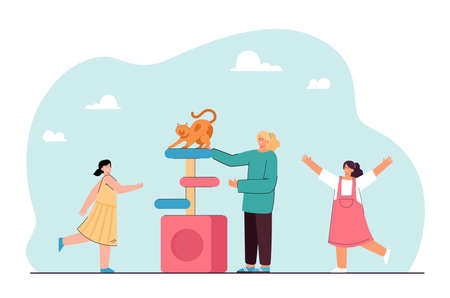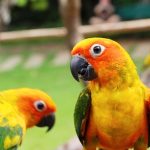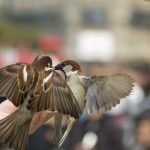1. Understanding Clicker Training
Clicker training is a popular and effective method for teaching birds new behaviors using positive reinforcement. This technique relies on a small handheld device called a clicker, which makes a distinct clicking sound. The click signals to the bird that it has performed the desired behavior correctly and will receive a reward.
How Clicker Training Works
The process of clicker training follows a simple pattern:
| Step | Description |
|---|---|
| 1. Introduce the Clicker | Start by clicking the device and immediately giving your bird a treat. This helps the bird associate the click with a positive outcome. |
| 2. Reinforce Desired Behavior | When your bird performs the desired action, click at the exact moment and follow up with a treat. |
| 3. Repeat and Reward | Consistency is key—repeat the process multiple times until your bird understands that the behavior leads to rewards. |
| 4. Add Commands | Once your bird reliably responds to the clicker, introduce verbal cues or hand signals to reinforce learning. |
Why Clicker Training is Effective
This method works well because it clearly communicates to your bird what actions earn rewards. Unlike punishment-based training, which can create fear or stress, clicker training builds trust between you and your bird. It also keeps training sessions fun and engaging, encouraging your pet to participate willingly.
Benefits of Clicker Training for Birds
- Encourages Positive Behavior: Birds learn faster when rewarded rather than punished.
- Strengthens Bonding: Training sessions create positive interactions between you and your pet.
- Mental Stimulation: Keeps birds engaged and prevents boredom-related issues like feather plucking.
- Clear Communication: The distinct click helps eliminate confusion about which behaviors are being rewarded.
Getting Started with Clicker Training
If youre new to clicker training, start with short sessions of 5-10 minutes each day. Use high-value treats that your bird enjoys, such as small pieces of fruit or seeds. With patience and consistency, youll soon see progress in your birds learning!
2. Getting Started: Choosing the Right Clicker and Treats
Before you begin clicker training your bird, its important to choose the right tools. Selecting an appropriate clicker and offering the best treats will help make training sessions more effective and enjoyable for both you and your feathered friend.
Choosing the Right Clicker
A clicker is a small handheld device that makes a distinct clicking sound when pressed. This sound helps your bird associate positive reinforcement with desired behaviors. There are different types of clickers available, so its essential to pick one that suits your birds comfort level.
Types of Clickers
| Clicker Type | Description | Best For |
|---|---|---|
| Standard Box Clicker | A basic clicker with a loud, sharp sound. | Larger birds or birds comfortable with louder noises. |
| Soft Click Clicker | A quieter version of the standard clicker. | Smaller birds or birds sensitive to loud sounds. |
| Finger Clicker | A compact clicker worn on the finger for easy use. | Hands-free convenience during training. |
| Button Clicker | A clicker with a raised button for easier pressing. | Trainers who prefer a more ergonomic design. |
Selecting the Best Treats
The right treats will keep your bird motivated during training. Choose something small, tasty, and easy to consume quickly so your bird stays engaged without getting distracted by eating.
Recommended Treats Based on Bird Size
| Bird Size | Recommended Treats |
|---|---|
| Small Birds (Budgies, Finches, Canaries) | Millet spray, small seed mix, tiny pieces of fresh fruit (like apple or banana). |
| Medium Birds (Cockatiels, Conures, Lovebirds) | Sunflower seeds, chopped nuts, diced vegetables (carrot, bell pepper), dried fruit bits. |
| Large Birds (African Greys, Macaws, Cockatoos) | Pine nuts, almonds (unsalted), chunks of fruit (mango, papaya), cooked grains like quinoa. |
Treat Tips for Effective Training
- Use high-value treats: Find out what your bird loves most and reserve it specifically for training sessions.
- Keep treats small: Tiny portions ensure quick consumption and maintain focus on training rather than eating.
- Avoid unhealthy options: Stay away from sugary or salty snacks that could harm your birds health.
Final Preparations Before Training Begins
Now that youve chosen the right clicker and treats, youre ready to start training! Make sure to practice using the clicker before introducing it to your bird and keep sessions short and positive to build trust and enthusiasm. In the next section, well cover how to introduce your bird to the clicker and establish a strong foundation for successful training.

3. Building Trust and Conditioning Your Bird
Before you can effectively use clicker training with your bird, it’s essential to build trust and create a positive association with the clicker. Birds are intelligent and sensitive creatures, so taking the time to establish a strong foundation will make training smoother and more enjoyable for both of you.
Why Trust Matters in Training
Trust is the key to successful training. If your bird feels comfortable and safe around you, they will be more willing to learn new behaviors. Rushing the process or forcing interactions can lead to fear and resistance, making training difficult. Instead, focus on creating a stress-free environment where your bird sees you as a source of positive experiences.
Introducing Your Bird to the Clicker
The first step in clicker training is conditioning your bird to associate the sound of the clicker with something positive—usually a treat. This process is called “charging” the clicker.
Step-by-Step Conditioning Exercise
- Choose a Quiet Environment: Find a calm and distraction-free space where your bird feels at ease.
- Select a Favorite Treat: Use small, high-value treats that your bird loves, such as millet, sunflower seeds, or small fruit pieces.
- Click and Reward: Click the clicker once and immediately give your bird a treat. Repeat this process multiple times.
- Observe Your Bird’s Reaction: After several repetitions, your bird should start looking forward to the treat after hearing the click.
- Repeat Over Several Sessions: Do short sessions (5-10 minutes) over a few days until your bird consistently associates the click with receiving a reward.
Signs That Your Bird Is Ready for Training
You’ll know your bird has made the connection between the clicker and rewards when they display these behaviors:
| Sign | Description |
|---|---|
| Excited response | Your bird perks up or moves toward you when they hear the click. |
| Eager anticipation | Your bird starts expecting a treat right after each click. |
| No signs of fear | Your bird remains relaxed and engaged during sessions. |
Troubleshooting Common Issues
Your Bird Ignores the Clicker Sound
If your bird doesn’t seem interested in the clicker, try using a different type of treat or adjusting the timing between clicking and rewarding. Some birds take longer to make associations, so be patient.
Your Bird Acts Nervous Around the Clicker
If your bird seems startled by the sound, try muffling it slightly by clicking behind your back or using a softer-sounding alternative like a pen cap click.
The Importance of Patience and Consistency
Building trust takes time, so don’t rush this stage. The more positive experiences your bird has with you and the clicker, the more motivated they will be to participate in training sessions. Stick with consistent short sessions and always end on a positive note.
4. Teaching Basic Commands and Tricks
Clicker training is an effective way to teach your bird basic commands and fun tricks using positive reinforcement. By following these step-by-step instructions, you can help your feathered friend learn foundational behaviors like targeting, step-up, and simple tricks.
Step 1: Teaching Targeting
Targeting is one of the easiest commands to teach and helps your bird understand the clicker training process.
What You Need:
- A target stick (a chopstick or similar object)
- A clicker
- Your bird’s favorite treats
How to Teach Targeting:
- Hold the target stick near your bird but not too close.
- When your bird looks at or moves toward the stick, click and reward immediately.
- Gradually require your bird to touch the stick with its beak before clicking and rewarding.
- Repeat in short sessions until your bird reliably touches the target stick on command.
Step 2: Teaching Step-Up
The step-up command is essential for handling your bird safely and building trust.
How to Teach Step-Up:
| Step | Instruction |
|---|---|
| 1 | Hold out your finger or a perch just below your bird’s chest. |
| 2 | Say “Step up” in a calm voice while gently nudging its chest. |
| 3 | If your bird steps onto your hand, click immediately and give a treat. |
| 4 | Repeat several times a day in short sessions until your bird steps up confidently on cue. |
Step 3: Teaching Simple Tricks
Once your bird understands basic commands, you can start teaching fun tricks like spinning in a circle or waving.
Example: Teaching Spin
- Hold a treat in front of your bird and slowly move it in a circular motion.
- If your bird follows the treat with its head or body, click and reward.
- Gradually encourage full rotation by continuing to lure with the treat.
- Add a verbal cue like “Spin” once your bird consistently completes the motion.
- Practice regularly until your bird responds to the cue without needing the treat as guidance.
By using patience and consistency, you can train your bird to follow commands and perform entertaining tricks. Keep training sessions short, positive, and rewarding for the best results!
5. Troubleshooting Common Challenges
Clicker training is a fantastic way to teach your bird new behaviors, but sometimes challenges arise. If your bird is afraid of the clicker, lacks motivation, or gets easily distracted, don’t worry! Here are some expert tips and solutions to help you overcome these common obstacles.
Fear of the Clicker
Some birds may initially be startled by the sound of the clicker. This can slow down progress, but with patience, you can help them feel comfortable.
Solutions:
- Muffle the Sound: Wrap the clicker in a towel or use a quieter alternative like a ballpoint pen.
- Pair with Treats: Click from a distance and immediately offer a favorite treat to create positive associations.
- Gradual Exposure: Start by clicking softly and gradually increase volume as your bird becomes more comfortable.
Lack of Motivation
If your bird isn’t responding to training, they may not be motivated enough. The key is finding what excites them!
Ways to Increase Motivation:
| Possible Issue | Solution |
|---|---|
| Treats arent appealing | Try different high-value treats like nuts or dried fruit. |
| Your bird isnt hungry | Train before regular feeding times when theyre more food-motivated. |
| The session is too long | Keep sessions short (5-10 minutes) to maintain interest. |
| Lack of variety | Add new tricks or toys to keep training engaging. |
Distractions During Training
Your bird might struggle to focus due to environmental distractions. A calm setting can make a big difference.
Tips for Reducing Distractions:
- Quiet Environment: Train in a quiet room with minimal noise and movement.
- Avoid Overstimulation: Remove other pets or people that might draw attention away from training.
- Create Routine: Training at the same time each day can help your bird focus better.


